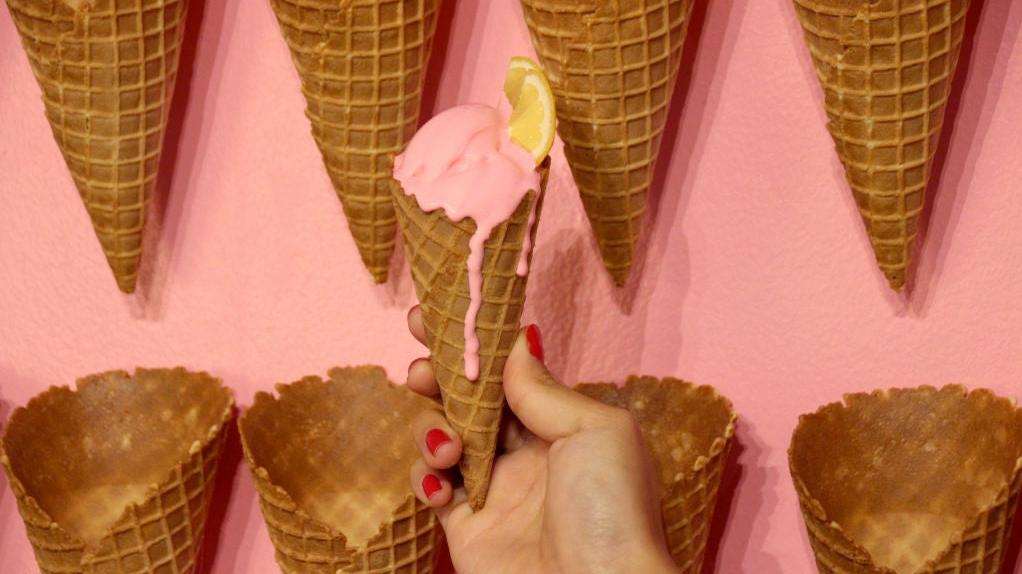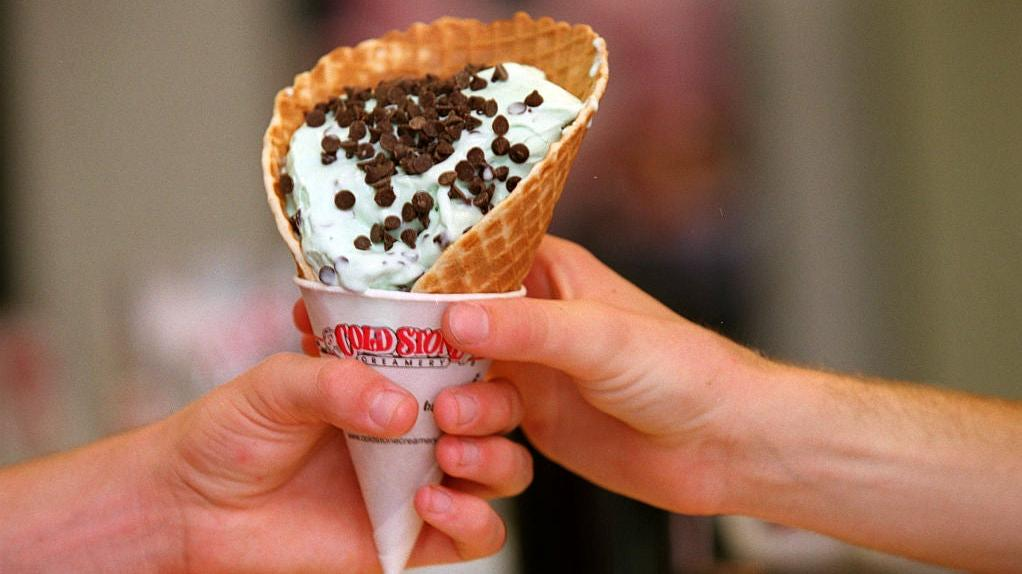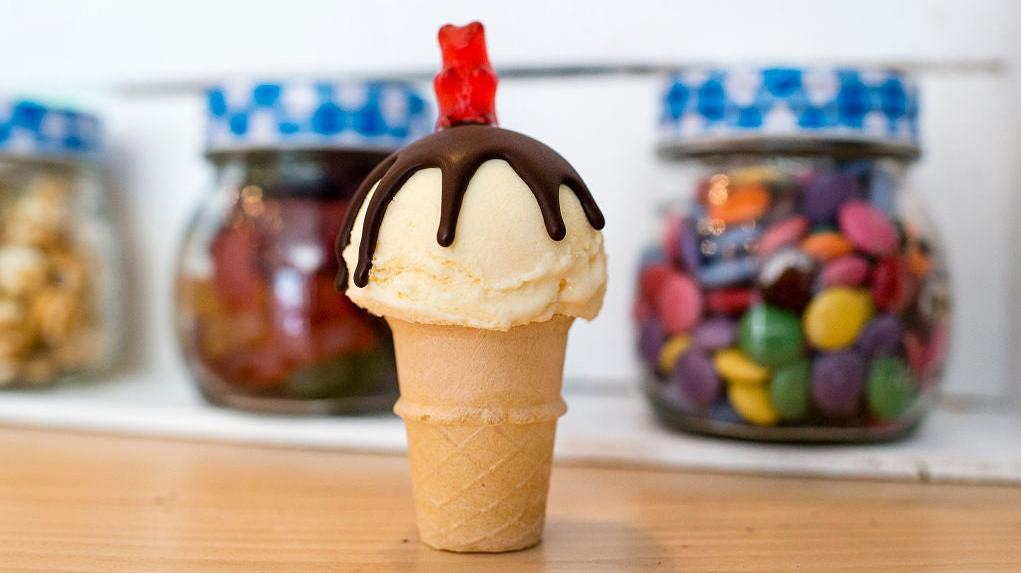Which Ice Cream Cone Should I Choose? A Quick Primer
Cake cones, sugar cones, waffle cones, kiddie cones—what's the right type for you and your scoops?
Ordering ice cream in the thick of summer tourism season at a charming roadside creamery can be a tense, high-pressure situation. You might think that stopping for a scoop sounds like the perfect mid-afternoon treat, but five minutes later you're elbow-to-elbow with indecisive customers who want samples of six different flavors and parents hurriedly trying to place orders for the entire family while soothing children on the verge of tantrums. (The little ones are feeling the pressure, too.) The hardworking teens behind the counter, with only a box fan to cool them off, are trying to move things along, but no matter how prepared the customers are with their ice cream orders, one question always seems to trip people up: "What kind of cone do you want?"
I am definitely guilty of this too, by the way. I always remember to specify "cone" instead of "cup," but I always forget to mention which type of cone—and there are always two or three or four to choose from. Here's a quick primer on the main varieties you might encounter at the counter. Keep them top of mind for your next order.

Sugar Cone
Make no mistake: a sugar cone is not the only type of ice cream cone that contains sugar. And though it has a waffle pattern, it's not the same as a waffle cone. Yes, it's slightly confusing. (See why we thought this primer might be necessary?) When you hear "sugar cone," you can typically expect to see the type of cone in the photo above: a slim, medium-sized cone with waffle-patterned exterior coming together in a flush, even edge on top. It's thick and sturdy, which minimizes breakage, though its compact size means that a standard scoop of ice cream sits rather awkwardly atop the opening, with lots of perilous overhang that will need to be licked up immediately if you want to keep your clothes from becoming a Pollack painting of Neapolitan drips. This is the sweetest of the cones (besides the specialty cones dipped in a layer of chocolate—more on those later), so it pairs well with ice cream flavors whose sweetness is slightly more muted: rich dark chocolate, butter pecan, and coffee all taste great in a sugar cone.
Waffle Cone
If you head to any ice cream shop that makes its own cones, they're likely to be waffle cones. These are slightly thinner, airier, and crispier than sugar cones. Because they're made by rolling a thin round waffle into a conical shape (a cool demonstration can be found here), the opening is on a bias, more tear-drop-shaped than round, and wider than the opening on a sugar cone or cake cone. This is crucial, because it means the ice cream sits inside the cone rather than perched atop it; the waffle cone "hugs" your scoops, catching drips and making the eating experience more seamless. They are pretty big, though, so they're more of a commitment to eat than the other cones. And they're a touch more fragile, since only a portion of the exterior is double-walled—be prepared to catch any collapsing shards of cone with your hands or teeth! Waffle cones are a great option on a hot day when ice cream might melt faster, because it is less likely to drip all over your hands. Order a waffle cone whenever you're getting an ice cream with lots of mix-ins, like Moose Tracks or chocolate chip cookie dough. The wide mouth of the cone will better accommodate the extra bulk.
Cake Cone
The term "cake cone" encompasses a number of sizes and styles, but it's the lightest and least sweet of all three cone types. It's got a melt-in-your-mouth wafer texture to it that is easier for little kids to bite into, hence why the "kiddie cone" option at most ice cream parlors or fast food joints tends to be a miniature version of a cake cone. The top is bulbous, perfect for accommodating big round scoops of ice cream, and contains little reservoirs between the inner and outer layers of the cone in order to catch and absorb drips. On most cake cones (one notable exception being twin cones), the bottom isn't conical, but rather cylindrical and flat-bottomed, which is easier for many people to hold and why it's sometimes known as a "safety cone." (Don't try to set it down on its flat bottom while it's full of ice cream, though. There's a 99% chance it'll topple.) If no ice cream gets down into the bottom of the cone while you're eating, then the final few bites can be a little dry and disappointing. However, any ice cream that does get trapped down there is caught by more of those little reservoirs, resulting in a crunchy, melty, and delicious finale. Pair this cone with sweeter ice cream flavors like birthday cake, cookies 'n cream, and rainbow sherbet.
Specialty Cones
You'll usually see these in the case alongside the other cone options, available as an upgrade; they might cost an extra 50 cents or maybe even two or three bucks more, depending on how gourmet the scoop shop is. You know the ones: they're waffle cones with a few inches of the top dipped in chocolate and rolled in sprinkles, or maybe encrusted with chopped nuts or Oreo crumbles or Fruit Loops. My advice? Skip 'em all. Eating an ice cream cone is already a task that requires some maneuvering, and these baubles just present more obstacles and mess for no added value in the flavor department. You're already eating ice cream, nature's perfect dessert. Plus, if you want chocolate and sprinkles involved, why not just get chocolate sauce and sprinkles on top of the ice cream itself? These specialty cones just aren't worth their higher price tag.
For more information, visit this thorough overview on Webstaurant Store's website. And remember, you can buy these cones for your homemade ice cream, too. What's your favorite?


